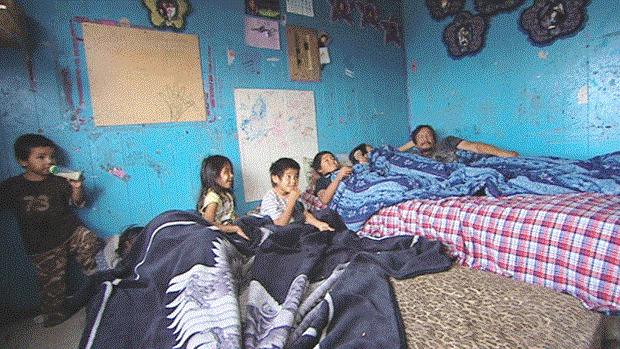We often read news articles about rampant drug addiction and suicide among young people living in reserves, watch TV coverage of Indigenous communities living under “boil water” warning for decades, and learn about how native children growing up with less funding for social services and education.
A new study released by the Canadian Centre for Policy Alternatives (CCPA) brings all this together to shed light into the country’s Indigenous child poverty rate — something that has “never before been examined,” according to the centre.
The study looked into the poverty rates, based on income, on reserves, and in the territories. It also monitored the living conditions of status First Nation children. The study found that 60 per cent of children on reserves live in poverty, and they are more than twice as likely than non-Aboriginal children to live in poverty.
RELATED CONTENT
Canada adopts U.N. declaration of rights of Indigenous peoples
Nunavut, Nunavik areas decry slow, unreliable Internet service
Report call for Inuit involvement in mapping Arctic shipping traffic
“The shameful reality in Canada is that devastatingly high child poverty on reserves is getting worse, not better,” said David Macdonald , senior economist with the CCPA. “Despite recent attempts at reconciliation concerning abuse in residential schools, we are risking a new lost generation of Indigenous youth who are growing up in unconscionable poverty.”
The study identified three tiers of child poverty in Canada:
- The worst poverty is experienced by status First Nation children, 51 per cent of whom live in poverty, rising to 60 per cent for children on reserve. Child poverty rates on-reserve worsened between 2005 and 2010.
- The second tier encompasses other Indigenous children and disadvantaged groups. The children of immigrants suffer a child poverty rate of 32 per cent while racialized (visible minority) children have a poverty rate of 22 per cent. Between these are found non-status First Nations children (30 per cent), Inuit children (25 per cent) and Métis children (23 per cent).
- The third tier consists of children who are non-Indigenous, non-racialized and non-immigrant, where the rate of 13 per cent is similar to the OECD average.
“There has historically been a frustrating lack of data when it comes to Indigenous poverty in Canada,” says Daniel Wilson, co-author of the report. “The Conservative government’s decision to deprive reserves of adequate funding is clearly related to the increase in child poverty we have observed.”
Other findings by the study include:
- The poverty rate for First Nation children living on reserve is highest in Manitoba (76 per cent) and Saskatchewan (69 per cent) and lowest in Quebec (37 per cent).
- When examined by city, Winnipeg, Regina, and Saskatoon have the highest Indigenous child poverty rates of 42 per cent, 41 per cent, and 39 per cent, respectively. At 19 per cent, Toronto has the lowest Indigenous child poverty rate.
- Ontario, where Attawapiskat is located, has an on-reserve child poverty rate of 48 per cent, while across Hudson Bay in Quebec, the James Bay Cree have a rate of 23 per cent.
The study called for the creation of a plan to cut down poverty in reserves that would:
- Report poverty rates on reserves and in the territories;
- Improve direct income support;
- Improve employment prospects; and
- Begin to implement longer-term solutions.
“For Canada’s youngest and fastest-growing population, it is critical that we come to terms with the ongoing crisis affecting Indigenous people and act immediately to help resolve it. The growth of Indigenous child poverty cannot be allowed to deprive another generation of opportunity,” said Wilson.

